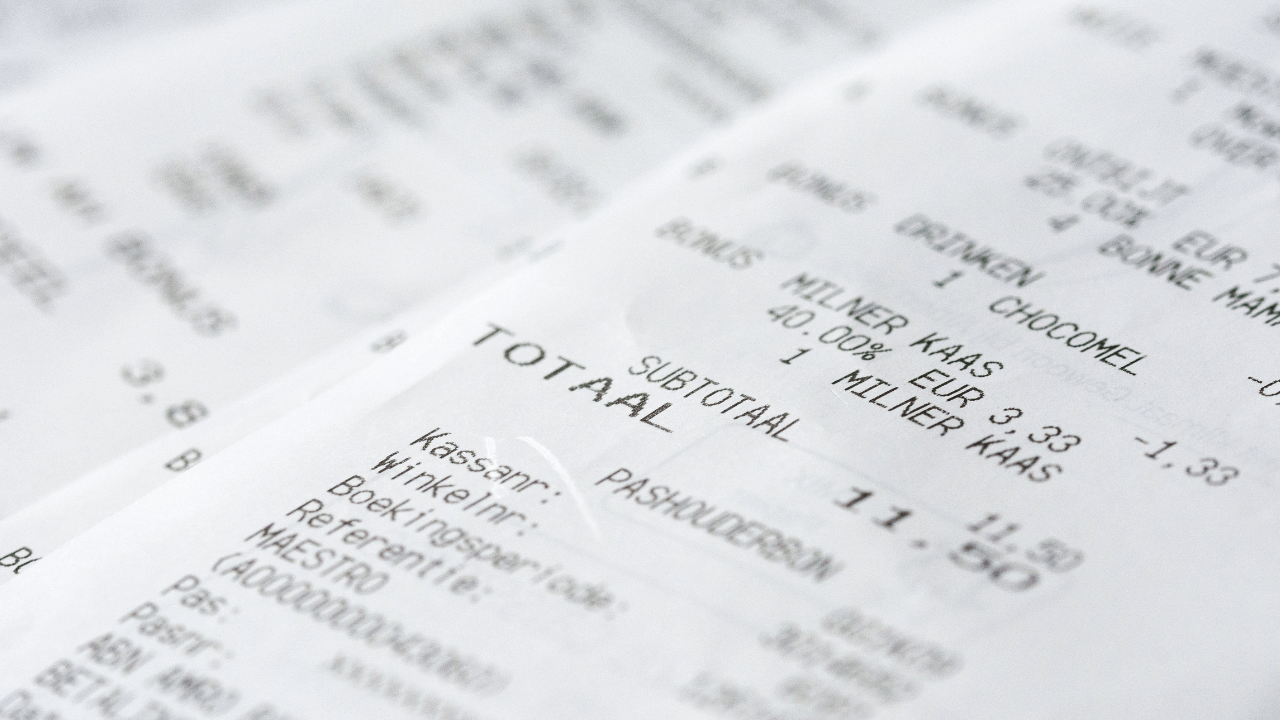Language:
Expense Report vs. Invoice: What Is the Difference? doola’s A-Z Guide With Examples

What is the most common challenge business owners face with multiple financial documents?
Distinguishing and maintaining expense report vs. invoice: two essential but distinct records that track money flow in different ways.
But again, understanding the expense report vs. invoice distinction is crucial for entrepreneurs looking to stay organized and financially sound.
In today’s guide, we will cover the expense report vs. invoice breakdown, explore their key differences, and share how doola Bookkeeping can help you manage both seamlessly.
Understanding Expense Reports

An expense report (example shared above) is a document used to track and reimburse business-related expenditures. Employees, freelancers, and business owners use it to record out-of-pocket expenses such as travel, meals, office supplies, or client entertainment.
These reports ensure that businesses accurately log expenses and employees get reimbursed promptly.
Properly maintained expense reports ensure businesses stay financially organized while ensuring employees receive timely reimbursements.
An expense report serves two key purposes:
It determines the exact reimbursement amount an employee is owed for business expenses paid out of pocket, and it provides a detailed record of those expenses, making them easier to categorize for tax deductions.
Typically, an expense report requires:
Itemized details of each expense, along with attached receipts as proof.
In many cases, expenses are grouped by category, ensuring seamless integration into a company’s bookkeeping system.
For small business owners, understanding the difference between an expense report vs. invoice is essential for accurate financial tracking. While invoices help businesses collect revenue, expense reports ensure outgoing costs are properly recorded and reimbursed.
Confused about what qualifies as an IRS-approved expense report?
Let’s break it down for you:
✔️ Download Form 2106 for employee business expenses
✔️ Download Form 8829 Expenses for business use of your home
What Should an Expense Report Include?
An expense report serves as a crucial record for tracking business-related spending, ensuring transparency and proper reimbursement. Whether you’re a freelancer, employee, or business owner, knowing what to include in an expense report is essential for smooth financial management.
At a minimum, an expense report should contain:
- Category: Business classification (e.g., travel, meals, office supplies).
- Amount Spent: The exact cost of each item.
- Receipts & Proof: Supporting documents like receipts or invoices.
- Approval Section: A space for managerial approval (if applicable).
Most expense reports also include:
1. Subtotals by Category:
To streamline bookkeeping and ensure accurate financial entry.
2. Total Reimbursement Request:
The final amount being claimed.
3. Clarifications for Unusual Expenses:
Additional notes for expenditures that don’t fit into standard categories.
For example, a marketing consultant traveling for a client meeting would submit an expense report covering their flight, hotel, and meal reimbursements. This structured approach ensures expenses are properly recorded and categorized in bookkeeping systems.
Mastering the expense report vs. invoice distinction is crucial for financial clarity. While expense reports track outgoing business costs, invoices document incoming payments.
Managing both efficiently can be overwhelming; but that’s where doola Bookkeeping steps in, helping entrepreneurs stay organized and compliant.
What Is an Invoice?

An invoice (example shared above) is a document businesses send to clients or customers to request payment for goods or services provided. It serves as an official payment request and a legal financial record, ensuring clear communication between sellers and buyers.
An invoice outlines the total amount due, payment terms, and deadlines. Some businesses refer to it as a “sales invoice.”
For the buyer, the invoiced amount is recorded as accounts payable or the money they owe. For the seller, it becomes accounts receivable, money they expect to receive.
Can Invoices Protect Your Business During an Audit?
One crucial aspect of invoicing is maintaining a clear paper trail. Well-organized, numbered invoices help businesses track income and ensure compliance with tax regulations.
In case of an audit, these records provide transparency and proof of transactions.
Ultimately, understanding the distinction between an expense report vs. invoice is essential for accurate financial management.
What Should an Invoice Include?
When sending an invoice, clarity and completeness are key. A well-structured invoice ensures smooth transactions, prevents payment delays, and serves as a legal financial record.
Unlike expense reports (track business spend), invoices document revenue.
Here’s what every invoice should include:
- Client & Business Details: Include names, addresses, and contact information for both parties.
- Itemized List of Services/Goods: A breakdown of services provided or products sold, along with individual costs.
- Total Amount Due: The final charge, including applicable taxes or discounts.
- Payment Instructions: Specify accepted payment methods, terms, and any late fee policies.
Example: A freelance graphic designer completes a logo design project and sends an invoice to their client, requesting payment within 30 days.
A detailed understanding of the expense report vs. invoice distinction helps you manage both outgoing expenses and incoming payments seamlessly.
Key Differences Between Expense Reports and Invoices
Having complete clarity of expense report vs. invoice is crucial for keeping your business finances organized. While both documents track financial transactions, they serve opposite purposes.
One records business spending, while the other requests payment for services or products.
Here’s a breakdown of their key differences:
| Feature | Expense Report | Invoice |
|---|---|---|
| 1. Purpose | Tracks business expenses for reimbursement | Requests payment for services or goods |
| 2. Used By | Employees, business owners, contractors | Business owners, freelancers, vendors |
| 3. Includes | List of reimbursable expenses | Details of goods/services sold |
| 4. Sent To | Internal finance department | External clients or customers |
| 5. Payment Direction | Business reimburses the submitter | Client pays the business |
Managing both expense reports and invoices efficiently can be time-consuming. Precisely why busy entrepreneurs need doola’s monthly bookkeeping services.
With automated tracking and accurate record-keeping, doola helps businesses stay on top of their finances, so you can focus on growing your business without the paperwork hassle.
When to Use an Expense Report vs. Invoice
Knowing when to use an expense report vs. invoice is essential for keeping financial records organized and ensuring smooth transactions. While both serve a purpose in business finance, they apply to different scenarios.
Let’s break it down for you in simpler terms.
📌 When to Use an Expense Report:
Expense reports come into play when an individual or business needs to track and get reimbursed for out-of-pocket expenses. The most common situations include , or
- A startup founder purchases software subscriptions for business use and submits them for tracking.
By documenting and tracking these expenses accurately, businesses ensure proper financial management and tax compliance.
📌 When to Use an Invoice:
Invoices, on the other hand, are used when requesting payment for services or goods provided. Here are a few common examples:
- An e-commerce seller sends an invoice to a bulk-buying customer.
Invoices help maintain clear payment records and ensure timely revenue collection.
Effectively managing both expense reports and invoices efficiently can feel tough, but with the right bookkeeping system, it doesn’t have to be.
doola Bookkeeping simplifies the tasks, helping businesses streamline financial tracking, automate reporting, and stay tax-ready year-round.
How to Manage Both Efficiently
Effectively managing expense report vs. invoice can help businesses save time, reduce financial errors, and maintain compliance. A structured approach ensures smooth operations and accurate record-keeping.
Here’s how:
1. Use Digital Tools: Cloud-based accounting software keeps expense reports and invoices organized in one place.
2. Automate Invoice Generation: Platforms like doola Bookkeeping help create, send, and track invoices effortlessly.
3. Keep Receipts Digitized: Scanning and storing receipts digitally prevents loss and simplifies tax preparation.
4. Schedule Regular Reviews: Conducting monthly financial audits helps track outstanding invoices and pending reimbursements.
5. Integrate with Bookkeeping Services: Top-rated solutions like doola Bookkeeping streamline financial tracking and ensure accuracy.
By implementing these strategies, businesses can maintain better financial control.
Finally, let’s get right into how doola Bookkeeping makes tracking expense report vs. invoices effortless.
Overdue Finances and Paperwork Piling Up? Let’s doola It!

Although understanding (and managing) expense report vs invoice helps, staying on top of your business finances and taxes is a year-round challenge.
Thankfully, whether you’re tracking employee reimbursements or billing clients for services, doola Bookkeeping provides a seamless solution to keep your records accurate and organized.
Here’s how doola Bookkeeping always has you covered:
Expense Tracking & Reporting:
Automatically categorize expenses, store receipts digitally, and generate detailed reports for reimbursements and tax deductions.
Invoice Management & Payment Tracking:
Create, send, and track invoices with automated reminders, ensuring you never miss a payment.
All-in-one Accounting:
Stay compliant with real-time financial tracking and account reconciliation making tax season stress-free.
Catch-Up Bookkeeping:
If you’ve fallen behind on your books, doola’s Catch-Up Bookkeeping helps you get back on track and stay audit-ready.
With doola Bookkeeping, handling expense reports vs. invoices is no longer a headache. If your paperwork is piling up and deadlines are looming, our experts are ready to help.
Book a free demo today and take the first step toward stress-free bookkeeping.
FAQs: Expense Report vs. Invoice

Who typically uses expense reports and invoices?
Expense reports are commonly used by employees and freelancers to track business-related expenses for reimbursement. Invoices are used by businesses, freelancers, and vendors to bill clients for goods and services.
Can an expense report be used as an invoice?
No, an expense report tracks internal spending and requests reimbursement, whereas an invoice is an external request for payment from a client or customer.
How can small businesses track expenses and invoices effectively?
Using accounting software, automating processes, and integrating with doola’s monthly bookkeeping services ensures seamless tracking and organization.
What are the common mistakes to avoid when handling expense reports and invoices?
Some of the common mistakes to avoid are:
- Missing invoice due dates.
- Not using automated tools for tracking.




